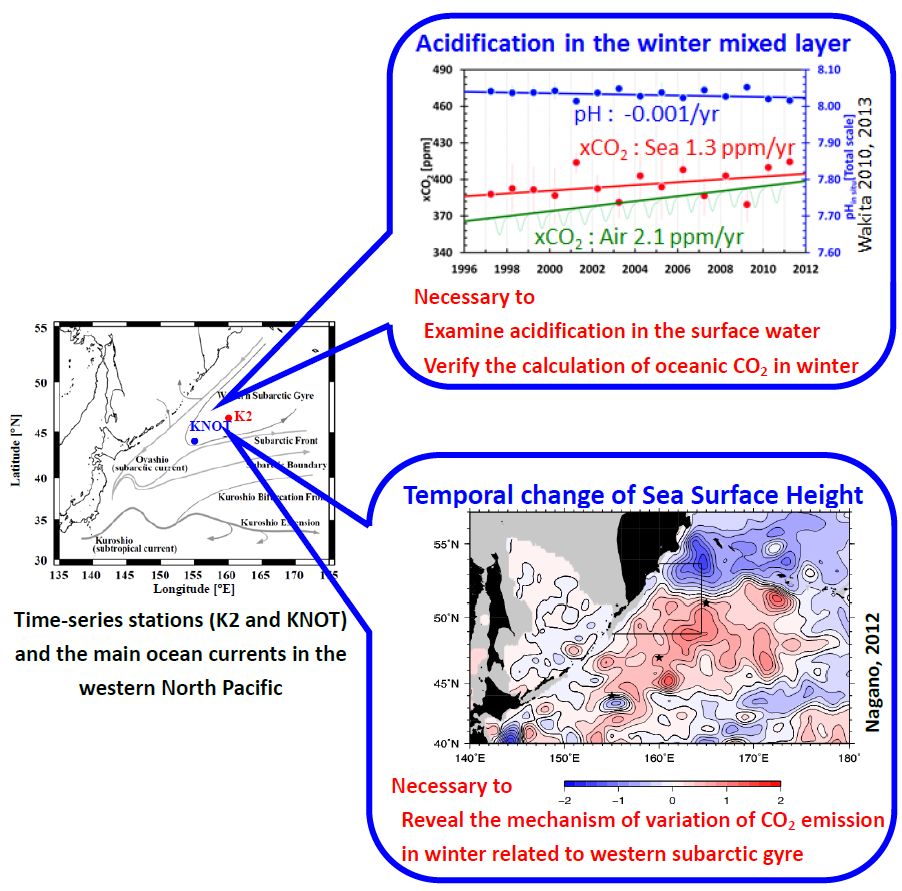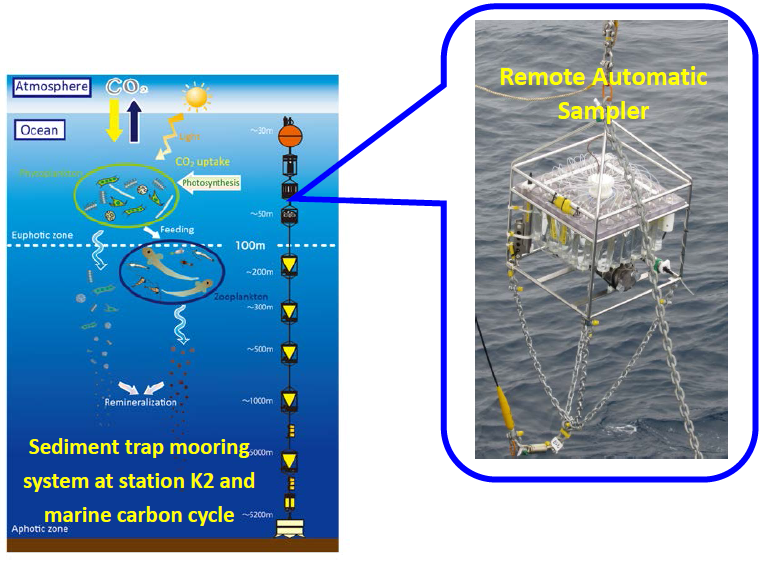Clarification of ocean acidification in the subarctic western North Pacific Ocean
| A01-K4. Clarification of ocean acidification in the subarctic western North Pacific Ocean | |
|---|---|
| PI | Masahide WAKITA*(Technical Scientist, Japan Agency for Marine-Earth Science and Technology) |
[Doctral degree: *Oceanography]
Purpose:
Globally, anthropogenic CO2 was taken up by the oceans at a rate of 2.2 ± 0.4 Pg C y-1 during the 1990s (IPCC, AR5). This CO2 uptake by the oceans has increased the hydrogen ion (H+) concentration (i.e., lowered the pH) and lowered the CaCO2 saturation state (Ω), by decreasing the carbonate ion (CO22-) concentration, thereby leading to bicarbonate ion (HCO2-) formation. These changes in carbonate system affect marine organisms and ecosystems throughout the world's oceans.
The subarctic western North Pacific Ocean is characterized by the high primary productivity and abundant marine resources. In the winter mixed layer of this region, pH decreased at -0.0011 ± 0.0004 yr-1 from 1997 to 2011 because of reduction of CO2 emission in winter by an increase in TA (Wakita et al., 2010, 2013). However, this detection of the pH decrease only in the winter mixed layer is not enough to clarify the impact of acidification on biological production and ecosystems. Therefore, this study is aimed at
- (i) Clarifying progression of ocean acidification in the western subarctic gyre by examining the temporal changes of pH and the gas exchange of CO2 at the air-sea interface using the CO2 system data.
- (ii) Verifying the calculation of oceanic CO2 in winter by observing the variation of winter mixed layer by using Remote Automatic Sampler (RAS) and CTDO sensor (~100 m) deployed in the sediment mooring system at station K2.
- (iii) Revealing the mechanism of the variation of CO2 emission in winter closely related to the upwelling of the deep high-TA water by examined the temporal variation of the western subarctic gyre by using chemical hydrographic data, altimetric sea surface height data, and hydrographic structures and volume transport based on altimeter-derived gravest empirical mode method.



